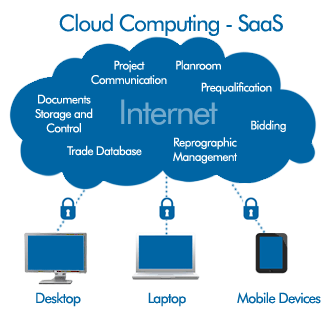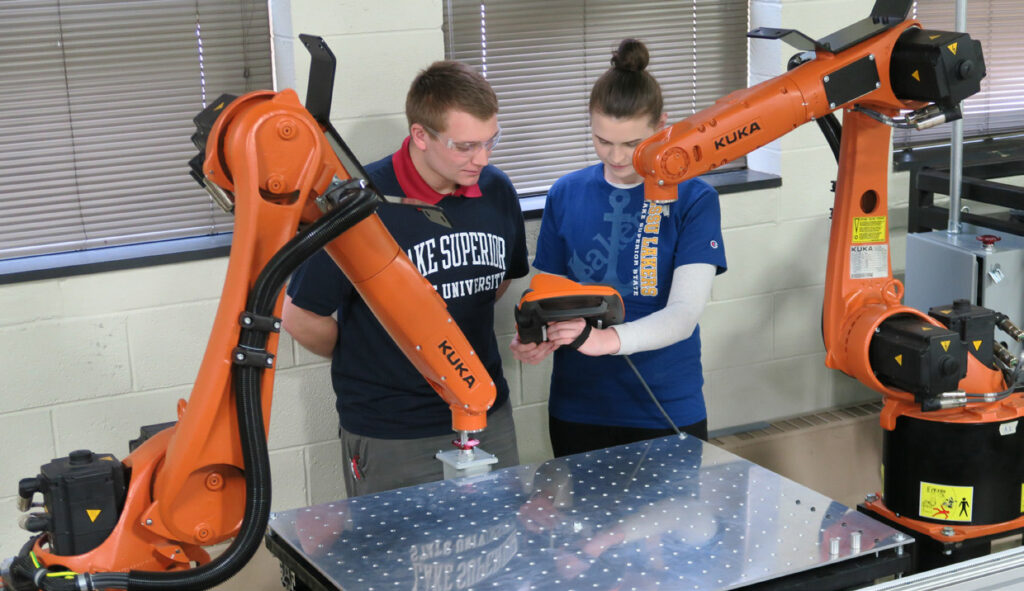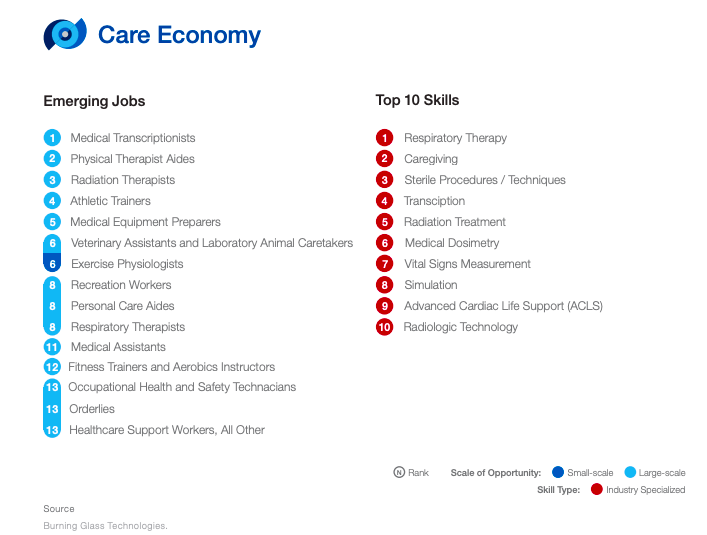Originally published on LinkedIn on June 12, 2021.
1. Data Science

All the organizations daily generate a huge volume of new data in the form of digits, texts, audio, video, images etc., that we call Big Data that traditional processing software cannot manage.
Such constantly growing big data needs thorough, critical as also timely analysis to create actionable insights for solving company or customer problems and also to generate ideas for the future growth of the company. Data Science has therefore become one such industry that is growing by leaps and bounds.
This requires skills drawn from various fields such as computer science, statistics, mathematics, graphic design, information visualization, domain knowledge, etc.
Therefore every major company with large-scale operations would require people with data science skills to manage their big data in order to have a competitive advantage in the growing markets and hence such people will always be in high demand by various industries that are growing in the near future.
Industry Uses
Finance/Banking: data science helps in risk assessment and monitoring, avoiding fraudulent behavior, tracking all payments, claims, customer analysis, customer experience, among many other such business operations.
Manufacturing: data science helps the manufacturing process in a big way to streamline the whole manufacturing process implementing artificial intelligence and predictive analytics etc. and for avoiding any major equipment failure.
Healthcare: with the help of pattern recognition, analytics, statistics, and deep learning algorithms, data science makes healthcare more efficient.
Travel Industry: creating customer profiles based on segmentation, offering personalized experiences to the customers according to their needs and preferences has been made possible by using data science.
Energy: since this industry is prone to major fluctuations in project cost and prices in the market, data science is employed to minimize such risks by using various predictive models.
Pharmaceuticals: data science is used extensively for all clinical trials and choosing people for such trials other than using it in the process of developing new drugs.
Gaming: data science is used to figure out customer reactions to various games and accordingly making improvements in gaming models.
It finds its application also in various other fields, including consumer goods and retailing, construction, communication and media, education, government, etc.
Top Companies
According to Builtin (builtin.com), the following are the top Data Science companies:
- Numerator
- Cloudera
- Splunk
- SPINS
- Alterix
- Civis Analytics
- Sisense
- Oracle
- Looker
- Teradata
Market Size
As per grandviewresearch.com, the global data science platform market size was valued at USD 3.93 billion in 2019 and is expected to expand at a compound annual growth rate (CAGR) of 26.9% from 2020 to 2027.
Learning Resources
Data Science uses the knowledge of Probability, Statistics, Excel, Business Analytics and software languages such as Python and R.
- LinkedIn Learning: Foundation Course in Data Science (linkedin.com/learning).edX (edx.org): Basic and Advanced Courses from Harvard, MIT, UC SanDiego and other universities.
- Coursera (coursera.org): Basic and Advanced Courses from IBM, Google and some reputed universities.
- Udemy (udemy.com): Basic and Advanced Courses.
- Udacity (udacity.com): Basic and Advanced Courses.
- Purdue University: Post Graduate Program in Data Science.
- University of Michigan: Applied Data Science with Python Certification.
- Berkeley Executive Education: Data Science Online
2. Cloud Computing

This is a very smart way to utilize vast computing resources, like Applications, Servers, Data Storage, Developmental Tools etc. hosted on a Remote Data Centre managed by a Cloud Service Provider.
Industry Uses
It has got great advantages like lowering IT costs, start using required applications in minutes, easily scale capacity, instead of going in for costly hardware upgradations, etc.
Even at home, we regularly use some kind of cloud computing services such as applications like Gmail, subscription services like Netflix, or cloud storage like Dropbox.
Most of the large organizations use Cloud Services and the demand for Cloud Computing is increasing day by day.
Top Companies
However, there are only a few large major players as employers in this field, namely:
- Microsoft Azure,
- Amazon Web Services (AWS)
- Oracle Cloud
- Google Cloud Platform
But in the near future, there is room for more players as this field has enormous potential to grow.
AWS is leading in the race although Microsoft Azure is neck-to-neck with AWS in competition. Therefore, for a good career in this field, it is necessary to start learning AWS or Azure to start with.
In the Cloud Computing job market, there are ample job opportunities to work as Full-stack Developer, Java Developer, Cloud Engineer, Software Architect, Data Scientist, .NET Developer, etc.
Market Size
Global Cloud Computing market size & share will reach USD 1025.9 billion by 2026: Facts & Factors (fnfresearch.com).
Learning Resources
According to ubuntupit.com , the best Cloud Computing Courses available are as follows:
- Google Cloud Fundamentals (cloud.google.com/training/courses)
- Cloud Computing by IBM (ibm.com/cloud/learn/cloud)
- Cloud Computing Concepts, Coursera (coursera.org)
- Introduction to Cloud Foundry and Cloud Native Software Architecture, edX (edx.org)
- Cloud Computing by UMUC, edX (edx.org)
- AWS Certification by Amazon (aws.amazon.com/training)
- Azure Introduction to Cloud Services, Udemy (udemy.com)
- Cloud Skills by Cloud Academy, Cloud Academy (cloudacademy.com)
- Learn Cloud Computing from Scratch, Udemy (udemy.com)
3. Artificial Intelligence (AI)

Google studies our behavior all the time. Facebook and Amazon observe our preferences and accordingly provide us with the right kind of messages. With constant feeding of the customer data and a whole range of other information, the machines have started learning and acquiring knowledge of their own. Alexa is a glaring example.
Artificial intelligence (AI) and machine learning are bringing in the next phase of the computing revolution when the majority of our intelligent decisions can be automated. Eventually, when most of the machines or utility appliances will be interconnected through Internet of Things (IOT), they will gather more data to process and gather more intelligence to serve us better.
Artificial Intelligence (AI) is therefore going to be a high growth industry in the next decade.
Industry Uses
Thus AI has a huge potential in many business applications such as in e-commerce where it will assist us in making intelligent choices based on our past purchasing history, as in Amazon online shopping, as also through virtual shopping assistants or chatbots in online retail shopping.
AI can also help us in preventing credit card fraud and identifying fake online reviews.
AI is also heavily used by Uber and logistics companies to find out easy routes and avoiding heavy traffic and improving operational efficiency.
These days, AI is also extensively used to analyze vast amounts of historical data to generate solutions for the early detection of diseases and also to discover new drugs.
AI finds extensive use in various other fields such as automobiles, marketing, agriculture, gaming, social media, the legal profession, robotics, etc.
Top Companies
Many companies are providing their Artificial Intelligence and Machine Learning through their popular cloud platforms. According to Datamation (datamation.com), the leaders among them are:
- Amazon Web Service (AWS)
- Google Cloud platform
- IBM Cloud
- Microsoft Azure
- Alibaba Cloud
While there is a large number of prominent AI vendors, there are some companies in this field who are known for their innovativeness, such as:
- OpenAI
- Vicarious
- Ubiquity6
- AIBrain
- CloudMinds
- DataRobot
- Affectiva
- UiPath
- Algorithmia
- Deepmind
- Domino Data Lab
- Narrative Science
- Sherpa.Ai
- Xanadu
- Butterfly Network
Market Size
According to Tractica, a part of market research firm Omdia (omdia.tech.informa.com), the global AI market is expected to reach a revenue of 118 billion dollars by 2025.
Learning Resources
According to e-student.org, in addition to the course by LinkedIn Learning, the following are the 10 best courses on Artificial Intelligence:
- Artificial Intelligence Tools and Concepts by LinkedIn Learning (linkedin.com/learning)
- AI Programming with Python Nanodegree (Udacity)
- AI For Everyone by Andrew Ng (Coursera)
- AI & Machine Learning Engineering Career Track (Springboard)
- Artificial Intelligence for Trading Nanodegree (Udacity)
- Artificial Intelligence A-Z: Learn How to Build an AI (Udemy)
- ColumbiaX’s Artificial Intelligence MicroMasters Program (edX)
- Introduction to Artificial Intelligence (edX)
- Google AI Education
- Artificial Intelligence: Reinforcement Learning in Python (Udemy)
- The Beginner’s Guide to Artificial Intelligence in Unity (Udemy)
4. Internet of Things (IoT)

The Internet of things (IoT) describes the network of physical objects or things that are embedded with sensors, software, and other technologies for the purpose of connecting and exchanging data with other devices and systems over the internet. Therefore, it is a convergence of various technologies to give us a unified solution for a better and satisfactory customer experience.
A good example is ‘smart home’, where all the appliances including air conditioning and security systems can be interconnected and operated remotely or on automated mode for certain functions.
Industry Uses
Increasingly, IoT is finding its application in various other fields such as Healthcare, Agriculture, Manufacturing, Construction, Energy Management, Vehicular Communication systems (self-driven cars), Maritime, Military Applications, etc.
Since it involves a whole range of technologies, there are immense opportunities for people with specific technical backgrounds for positions like, IoT/Cloud Software Developers, IoT Infrastructure Architect, IoT Systems Administrator, Cyber Security Experts, Test Engineers etc.
Top Companies
As per Zion Market Research Report (zionmarketresearch.com), the major players in this field, as mentioned by them, are:
- Hewlett Packard Enterprise
- Intel Corporation
- Hitachi Ltd.
- Amazon Web Services
- Fujitsu Ltd.
- Cisco Systems
- Huawei Technologies
- Micro Soft Corporation
- Beyond Verbal
- Affectiva
- Noldus Information Technology
- Lexalytics
- Adoreboard
- Cogito
- Siemens AG
- iMotions
- NVISO
- Gorilla Technology
- Sensum
- Oracle Corporation
- AT&T
- Bosch Software Innovations GmbH
- Kairos
- Sentiance
- IBM
- Tobii
Market Size
As per Mordor Intelligence (mordorintelligence.com), the global IoT market is expected to reach a value of USD 1,386.06 billion by 2026 from USD 761.4 billion in 2020, at a compound annual growth rate (CAGR) of 10.53%, during the forecast period (2021-2026).
Learning Resources
- IoT Foundations: Fundamentals, by LinkedIn Learning (linkedin.com)
- Introduction to Internet of Things by Stanford Online Free Course (https://online.stanford.edu/courses)
- Internet of Things – The Mega Course, Udemy (udemy.com)
- Internet of Things by New Horizons (https://clc.newhorizons.com/training-and-certifications/technical-courses/internet-of-things)
- Introduction to the Internet of Things, edX (edx.org)
- Internet of Things 101 Training, online and classroom based by Zeolearn (zeolearn.com)
- Internet of Things Courses, Coursera (coursera.org) and more.
5. Cyber Security

With extensive use of the internet for a large range of business operations that involve collecting, generating, and preserving sensitive information related to the business, it has become imperative to protect such information from unauthorized access through hacking or through a computer virus that may create havoc to the computer system, by way of stealing sensitive information for malicious purposes or often erasing entire data from the system.
Therefore, Cyber Security has become one of the fastest-growing industries.
Industry Uses
Cybersecurity experts work in every kind of company in various industries to protect companies from data breaches and attacks.
They come with various job roles and designations such as Security Software Developer, Security Consultant, Information Security Analyst, Ethical Hacker, Computer Forensics Analyst, Chief Information Security Officer, Penetration Testers to identify system flaws, IT Security Consultant, Security System Administrator, etc.
Top Companies
A few leading companies in this field are:
- Cisco
- Symantec
- Palo Alto
- Check Point Software
- FireEye etc.
Market Size
As per Grand View Research (grandviewresearch.com), the global cybersecurity market size was valued at USD 167.13 billion in 2020 and is expected to register a compound annual growth rate (CAGR) of 10.9% from 2021 to 2028.
Learning Resources
- Transitioning to a Career in Cyber Security, by LinkedIn Learning (linkedin.com)
- Cyber Security Courses, Udemy (udemy.com)
- BSc (Honours) Cyber Security by The Open University, UK (openuniversity.edu)
- Various Cyber Security Courses, techradar.pro (tech radar.com)
- The 10 Best Cyber Security Courses, digitaldefynd (digitaldefynd.com)
6. Blockchain Technology
As per Investopedia (investopedia.com), a blockchain collects information in groups, also known as blocks, that hold sets of information. Blocks have certain storage capacities and, when filled, are chained onto the previously filled block, forming a chain of data known as the “blockchain”. All new information that follows that freshly added block is compiled into a newly formed block that will then also be added to the chain once filled.

In short, the information stored in blockchains cannot be tampered with and the entire database is decentralized and is faster and more efficient to operate. The goal of blockchain is to allow digital information to be recorded and distributed, but not edited.
Industry Uses
Blockchain technology is being used or has the immense potential of being used in various industries such as Banking, Cryptocurrencies, Healthcare, Legal profession or in business operations where fool-proof contracts can be made using this technology, in supply chain operations, or even for voting purposes.
Top Companies
As per builtin.com, US-based top Blockchain Technology Companies are as follows:
- BRD
- BitMEX
- Netki
- Spring Labs
- SALT Lending
- Mythical Games
- Gemini
- Circle
- Coinbase
- Chronicled
- IBM
- Voatz
- Steem
- Shipchain
According to Grand View Research (grandviewresearch.com), the global blockchain technology market size was valued at USD 3.67 billion in 2020. It is expected to expand at a compound annual growth rate (CAGR) of 82.4% from 2021 to 2028. It is one of the fastest developing industries.
Learning Resources
- Blockchain: Beyond the Basics, by LinkedIn Learning (linkedin.com)
- The Complete Course on Understanding Blockchain Technology, Udemy (udemy.com)
- Blockchain Technology by edx (edx.org), from Berkeley University of California (https://blockchain.berkeley.edu/courses/
- Blockchain Courses, edX (edx.org)
- Courses on Blockchain Technology, Blockchain Institute of Technology (https://blockchaininstituteoftechnology.com/)
- Online Blockchain Technology Courses, TechBullion (https://techbullion.com/10-places-study-blockchain-technology-courses-online/)
7. Robotics

As per NASA (nasa.gov) robots are machines that can be used to do jobs. Some robots can do work by themselves. Other robots must always have a person telling them what to do.
As explained in Wikipedia, Robotics is an interdisciplinary field that integrates Computer Science and Engineering. Robotics involves the Design, Construction, Operation, and use of Robots. The goal of robotics is to design machines that can help and assist humans.
Robotics integrates various fields of engineering such as Electronics, Software Engineering, Mechatronics, BioEngineering as also Mathematics, among others.
Robotic arms on spacecraft are used to move very large objects in space. Spacecraft that visit other worlds are robots that can do work by themselves. People send them commands. The robots then follow those commands. This type of robot includes the Rovers that explore the surface of Mars.
Industry Uses
The following 6 industries that are using robotics in a significant way:
- Manufacturing
- Healthcare
- Agriculture
- Food Preparation
- Military
- Mining
The widest use of robotics can be found in the Car Industry where some hazardous jobs like welding and painting are done by robots. Robots are also used for moving heavy pieces other than performing some mundane repetitive tasks in the manufacturing process.
Of late, we can find the use of much more sophisticated applications of robotics in surgery in the Healthcare industry.
In other industries like Food Processing or in Warehousing, a whole lot of automation has been introduced through the use of robots.
More and more applications of robotics are being developed to make the manufacturing or other business processes more fast and efficient and at the same time labor-saving.
Top Companies
As per builtin.com, the following are some of the prominent companies in robotics:
- Nuro
- CANVAS Technology
- Piaggio Fast Forward
- Diligent Robotics
- Boston Dynamics
- Bluefin Robotics
- Applied Aeronautics
- Left Hand Robotics
- Righthand Robotics
- Dronesense
- Harvest Automation
- Rethink Robotics
- Vicarious
Market Size
As per The Manomet Current (manometcurrent.com), the global market size will reach US dollar 26710 million by 2025, registering a CAGR growth of 4.9% in revenue terms.
Robotics is one of the major future industries.
Learning Resources
- Introducing Robotic Process Automation by LinkedIn Learning (https://www.linkedin.com/learning/introducing-robotic-process-automation)
8. Drones

We are all aware of drones that are being used by Amazon to deliver parcels at the doorstep of the customers, in a limited way in some places.
Drones come in various shapes and sizes depending upon their function, usability, and cost.
There are Micro Drones of the size of an insect, Small Drones up to the size of two meters, Medium-Sized Drones that look a bit smaller than small aircraft as also Large Sized Drones that look like small aircraft that are primarily used by the military in high-risk areas for both military and surveillance operations.
Their area of operation can also vary from a close range of 5 KMs to the mid-range of 650 KMs.
Industry Uses
Drones are being used for Aerial Photography, in Agriculture for spraying pesticides, scaring away crop-eating birds, in the Construction Industry to check on the progress of the construction work, etc.
Also used as Fun Sports for drone racing, by the Military, Aerial Delivery, and Shipping, in Filming and Movies, in Fire Fighting, in Outdoor Sports, in operations requiring to reach difficult or high altitude places, in News and Journalism, as a substitute for physical human inspection of certain activities where drones are equipped with sensors, in Mapping and Mining Applications, in case of Medical Emergencies or even as an aid to perform Critical Surgeries, by the Law Enforcement Agencies, etc.
Top Companies
As mentioned by Built-In (builtin.com), the following is the list of some well-known drone manufacturers:
- Zipline
- Skydio
- Wing
- Propeller Aero
- Drone Dispatch
- Dedrone
- NVDrones
- DroneSeed
- Robodub
- AirMap
- Drone Deploy
Market Size
According to Mordor Intelligence (mordorintelligence.com), the drones market was valued at USD 20,245.78 million in 2020 and the market is projected to register a CAGR of 15.88% during the forecast period (2021-2026). It will be one of the fastest-growing industries, in the next decade.
Learning Resources
As suggested by digitaldefynd (https://digitaldefynd.com/best-drone-courses/), the following are the best 8 Drone Courses:
- Learn the Importance of Autonomous Systems and Drones Technologies by University System of Maryland (edX)
- Make an Open Source Drone (Udemy)
- Drone Programming Primer for Software Development (Udemy)
- Everything about Drones (DroneU)
- Become a Certified Drone Pilot (Drone Pilot Ground School)
- Drones: How to Tell Ariel Stories (Udemy)
- Build a Linux Based Raspberry Pi Drone (Udemy)
- The Complete Drone Business Course (Udemy)
9. Virtual Reality

Virtual reality is created through a computer-simulated three-dimensional environment looked through special goggles with sensors, in a way that the environment looks and feels like as being real.
This technology is highly useful particularly in cases where real-life experiments can be too dangerous or costly which can be substituted by way of creating a life-like situation with the help of virtual reality.
Industry Uses
Virtual reality technology is already being used in the fields of Car Manufacturing, Healthcare, Training and Development, Retail, Tourism, Architecture, Real Estate, Entertainment, Recruitment, Sports, Art and Design, Education, Marketing, Recreation, Gambling, Law Enforcement, News and Journalism, etc.
Top Companies
Here is a list of popular Virtual Reality Companies (softwaretestinghelp.com):
- iTechArt ( New York, USA)
- Oculus VR (California, USA)
- HTC (North Conway, USA)
- Samsung (Suwon, Korea)
- Microsoft (Washington, USA)
- Unity (San Francisco, USA)
- VironIT (San Francisco, USA)
- Alphabet/Google (California, USA)
- Next/Now (Chicago, USA)
- CemtrexLabs (New York, USA)
- Quytech (Gurugram, India)
- Groove Jones (Dallas, USA)
- Magic Leap (Florida, USA)
- Nvidia (Santa Clara, USA)
- AMD (Santa Clara, USA)
- WeVR (Santa Barabara, USA)
- WorldViz (Santa Barbara, USA)
- NextVR (Newport Beach, USA)
- Bigscreen (Berkeley, USA)
- Matterport (California, USA)
- Within (Los Angeles, USA)
Market Size
As per Grand View Research, the global virtual reality market size was valued at USD 15.81 billion in 2020 and is expected to grow at a compound annual growth rate (CAGR) of 18.0% from 2021 to 2028. It is one of the fastest-growing industries of the future.
Learning Resources
Virtual Reality Courses for Beginners & Experts by LinkedIn Learning (linkedin.com/learning)
8 Best Virtual Reality Courses, as suggested by digitaldefynd (digitaldefynd.com)
1.The Unreal Engine C++ Developer Course – Learn C++ & Make Games
2.Building your First VR Experience with Unity (Udemy)
3.Unreal VR Dev: Make VR Experiences with Unreal Engine C++ (Udemy)
4.Unreal Engine 4: Project Based VR Course for Arch Viz in UE4
5.Complete C# Unity Developer 3D: Learn to Code Making Games (Udemy)
6.Virtual Reality – VR Certification (App Development) (edX)
7.React VR – Creating Virtual Reality Apps
8.Build Virtual Reality Games for Android and iPhone
10. Genomics

According to National Human Genome Research Institute, Genomics is the study of all of a person’s genes (the genome), including interactions of those genes with each other and with the person’s environment
Industry Uses
The most common application of genomics is to understand and find cures for diseases.
We would be in a position to administer medicines suited specifically to someone’s genetic makeup, once we do genome analysis (sequencing a genome) at a personal level which is relatively quite affordable these days.
Besides this, there are several other applications of genomics:
Pharmacogenomics: it involves evaluating the effectiveness and safety of drugs on the basis of information from an individual’s genomic sequence.
Metagenomics: it can be used to identify new species more rapidly and to analyze the effect of pollutants on the environment.
Creation of new bio-fuels: Knowledge of the genomics of microorganisms is being used to find better ways to harness biofuels from algae and cyanobacteria. Genomics is also used in forensic analysis. It is also used in agriculture to develop hybrids with the most desirable qualities etc.
Top Companies
According to CPOE.org, the following are the best companies engaged in genomics. Such companies provide Genetic Testing, DNA Profiling and innovative Gene Therapies.
- Oxford Nanopore
- Helix
- Tempus
- Bayer Cropscience
- Orig3n
- Guardant Health
- InVitae
- Veritus Genetics
- Veracyte
- Roche
Market Size
As per Fortune Business Insights (globenewswire.com), Genomics as an industry is projected to reach USD 94.66 billion by 2028, exhibiting a CAGR of 19.4%.
Learning Resources
As compiled by Class Central, there are 70 Online Free Courses on Genomics, from Reputed Universities, along with their ratings (https://www.classcentral.com/subject/genomics).
Another 7 Best Courses on Genomics compiled by digitaldefynd:
- Genomic Data Science Specialization by Johns Hopkins University (Coursera)
- Genomics: Decoding the Universal Language of Life by University of Illinois at Urbana-Champaign (Coursera)
- Short Course in Genomics (National Human Genome Research Institute)
- Introduction to Genomics (Harvard Extension School)
- Stanford Genetics and Genomics Certificate (Stanford Online)
- The Genomics Era: the Future of Genetics in Medicine (FutureLearn)
- Introduction to Genomic Data Science by The University of California, San Diego (edX)
11. Nano Technology

Nanotechnology is a revolutionary technology that is expected to massively increase manufacturing production at a reduced cost, can increase efficiency in energy consumption, help clean the environment, and can resolve major health problems.
It is concerned with building materials and devices on the scale of atoms and molecules that may drastically change the character of the materials. For example, Carbon Nanotubes are a hundred times stronger than steel but six times lighter.
Industry Uses
Some of the major products or areas where Nanotechnology is used are as follows:
- Carbon nanotube body armour
- Surface protecting material
- Solar panel
- Fortified foods
- Titanium cosmetics
- Packaging materials
- Fabrics
- Transdermal patches
- Medicine
- Surgery
- Antimicrobial bandages
- Detergents
- Inflammable furniture
- Adhesives
Top Companies
As suggested by built-in, (https://builtin.com/companies/type/nanotechnology-companies),
Top 3 Nano Technology Solutions Companies are:
1.Dust Identity
2.Tag-it Tech
3.DeepCell Industries
Market Size
According to Intrado Globe News Wire (globenewswire.com), the nanotechnology market size is expected to reach USD 290.93 Billion in 2028.
Career Options and Educational Requirements
Any career in Nano Technology would require some fair level of formal education.
For example, in the field of medicine, medical scientists would need a medical degree or a Ph.D., or both. For food Scientists and Food Technologists, a bachelor’s degree in the concerned area is required. For Electrical Engineers, a bachelor’s degree would be necessary.
Those who are interested in working in the field of Nanotechnology would also require to study Microbiology and Nanomaterials over the course of their studies.
Learning Resources
- Nano@Stanford (https://online.stanford.edu) – Stanford School of Engineering – Free Online Course (Working knowledge of process technology and semiconductors is required).
- Nano Engineering, University of California San Diego (https://catalog.ucsd.edu/courses/NANO.html).
- Coursera – Nanotechnology: A Maker’s Course: (https://www.coursera.org/learn/nanotechnology).
- edX Course (edx.org): Introduction to the modern nanotechnology (https://www.edx.org/learn/nanotechnology).
- edX Course (edx.org): MicroMasters Program in Nanoscience and Technology by Purdue University.
- Future Learn: Short Course: Nanotechnology for Health: Innovative Designs for Medical Diagnosis by University of Twente (futurelearn.com).
- Udemy (udemy.com) – introductory short foundational course.
12. Renewable Energy

Renewable energy sources are inexhaustible and naturally occurring or naturally replenishing but are available for a limited period of time before they are again generated and replenished.
Industry Uses
Such renewable energy sources that are in use, are Solar, Wind, Biomass, and Hydroelectricity.
Tapping energy coming from the depth of the earth which is called Geothermal energy, energy from Hydrogen, and energy from the Ocean is now being explored.
All such energy sources are being used to produce electricity for our daily use.
Top Companies
As per Investopedia (investopedia.com), the following are the 10 biggest renewable energy companies in the world, with 12 months trailing (TTM) revenue, as of December 6, 2020.
- Orsted A/S: $34.97 billion
- Iberdrola SA: $34.23 billion
- Jinko Solar Holdings Co. Ltd.: $33.95 billion
- Vestas Wind Systems A/S: $15.2 billion
- Siemens Gamesa Renewable Energy SA: $9.48 billion
- Brookfield Renewable Partners LP: $3.58 billion
- First Solar Inc.:$3.5 billion
- Canadian Solar Inc.: $3.36 billion
- Renewable Energy Group Inc.: $2.61 billion
- Sun Power Corp.: $1.39 billion
Market Size
According to the Allied Market Research (alliedmarketresearch.com), The global renewable energy market was valued at $928.0 Billion in 2017 and is expected to reach $1,512.3 Billion by 2025, registering a CAGR of 6.1% from 2018 to 2025.
Learning Resources
Various renewable energy courses:
- Keystone Academic Courses (https://www.academiccourses.com/Course-in-Energy-in-Doctoral-Training-Alliance/United-Kingdom/University-Alliance/).
- Udemy: https://www.udemy.com/topic/renewable-energy/
- Harvard University: Energy Within Environmental Constraints: Fee Online Course (https://online-learning.harvard.edu/subject/renewable-energy)
- 10 Best Renewable Energy Courses, being offered by various reputed universities, as per The Nine Planets (https://nineplanets.org/guide/best-renewable-energy-courses/)
13. E-learning
Online learning has really democratized the whole process of gathering useful information and knowledge by making it accessible by anyone from any corner of the globe at a much lesser cost as compared to that of traditional mode. It is also self-paced learning at one’s own place, without having to reach anywhere to access it.
The major factors leading to this massive growth in the e-learning market are primarily the lower cost of investment in e-learning courses, more credibility of the e-learning course providers established over the past few years, including some of the major universities offering such courses who are behind the growth of Massive Open Online Courses (MOOC’s).
Now, anybody at any age can access online courses suitable for their purpose from the comfort of their homes.
A large number of corporates have also embraced e-learning for their employees to boost the productivity of their workforce.

Top Companies
There is an innumerable number of e-learning companies that provide e-learning content products and e-learning software solutions. Following are the top 16 such companies that enjoy excellent customer ratings, sorted by most reviews, as per TrustRadius (https://www.trustradius.com/).
- Articulate Storyline
- Articulate 360
- Adobe Captivate
- Brightspace
- PiiQ by Cornerstone
- LinkedIn Learning (lynda.com)
- Infosec Skills
- BizLibrary
- ITProTV
- Pluralsight Skills
- A Cloud Guru (Linux Academy)
- Coursera
- Skillsoft Leadership Development Program
- Udacity
- Udemy for Business (udemy.com)
- Docebo Learning Suite
Following are the 7 universities in the USA, offering Free Online College Courses, according to Ladders (the ladders.com):
- Duke University, Durhan, North Carolina.
- Harvard University, Cambridge, Massachusetts.
- Massachusetts Institute of Technology (MIT), Cambridge, Massachusetts.
- Stanford University, Bay Area in California.
- University of California, Berkeley.
- Yale University, New Haven, Connecticut.
- Carnegie Mellon University, Pittsburg, Pennsylvania.
Market Size
As per Global Market Insights (gminsights.com) the total e-learning market size was over $250 billion in 2020 and is expected to grow at a CAGR of over 21% during 2021-27.
E-Learning is by far, the fastest growing industry of the future.
Learning Resources
According to ispring (ispringsolutions.com), these are the top 9 Free e-learning authoring tools:
- iSpring Free
- Udutu
- IsEazy
- Adapt
- CourseLab
- GLOMaker
- H5P
- AdaptiveU
- Moovly
14. 3D Printing

According to 3dprinting.com, 3D printing or Additive Manufacturing is a process of making three-dimensional solid objects from a digital file.
3D printed objects are created by way of using additive processes in which an object is created by laying down successive layers of material until the object is created.
Each of these layers can be seen as a thinly sliced cross-section (through slicing software) of the object being produced by this process, layer by layer.
Industry Uses
It can be a small object, any Consumer Product, any Industrial Product, a Prosthetic Limb or it can even be as large an object as a House!
The major uses of 3D printing are found generally in the Automotive Sector, Aviation, Construction, Jewelry, Healthcare, Dental, Consumer Products, Eyewear, Food, Education as also for Bio-Printing (creating or growing organs through building cell structures).
Top Companies
As per Market Watch (marketwatch.com), the following are the 17 major players in 3D printing:
- Hewlett Packard Inc.
- 3D Systems Corporation
- Stratasys Ltd.
- EOS GmbH
- Renishaw
- ExOne Co.
- Beijing Tiertime Technology
- Mcor Technologies
- Nano Dimernsion Ltd.
- Sisma S.P.A.
- Xyzprinting
- Proto Labs Inc.
- SLM Solutions Group AB
- Nano Dimension
- Ultimaker B.V.
- Royal DSM
- General Electric Company (GE Additive)
Market Size
As per Grand View Research (grandviewresearch.com), the global 3D printing market size was valued at USD 13.78 billion in 2020 and is expected to expand at a compound annual growth rate (CAGR) of 21.0% from 2021 to 2028.
Learning Resources
- Udemy (udemy.com)
- Coursera (coursera.org)
- LinkedIn Learning (LinkedIn.com)
- Skillshare (skillshare.com)
- Instructables (instructables.com)
15. Sharing Economy

It is a new kind of doing business by way of sharing common resources, either products or services, among the people easily and effectively with the help of technologies like GPS that make the people respond to requests for goods or services quickly.
Both Airbnb and Uber are classic examples. Till recently, before the outbreak of Covid, the shared office space business was booming.
Top Companies
- Airbnb (for short stay accommodation)
- Uber (transforming taxi model)
- Lime (electric bike renting)
- Just Park (app to provide parking space)
- Zipcar (car rental service)
- Fon (wifi network access service)
- Spotahome (enables browsing of houses for renting)
- Stashbee (for using spare space for keeping things)
- Hubble (flexible office space for short term)
- Omni (renting out anything to anybody)
- Fiverr (for freelancers to provide services on demand)
- Snap (connects passengers with coach operators at cheaper rates)
Market Size
According to Spendmenot (spendmenot.com), The sharing economy is set to reach $335 billion by 2025 and the companies working in the sharing economies will grow by 2,133% in the next 12 years.
Learning Resources
Future Learn (futurelearn.com): The Sharing Economy – Free Online Course from RMIT University.
For Entrepreneurship, coming out with such new ideas of sharing and implementing such ideas with the help of suitable technologies and developing an app for its ease of use, are the prime considerations.
Otherwise, one can seek employment with any of such companies with suitable expertise and experience in the relevant area of the business domain.
16. Care Economy

Almost 40% of all projected job opportunities in emerging professions will be created in the Care Sector between 2020 and 2023, according to a report on the jobs of tomorrow from the World Economic Forum.
Care professions include Childcare, Eldercare, Nursing, Therapy, Nutrition, Mental Health Care, Healthcare Support Services (including handling advanced diagnostic tools and machines), and Personal Trainers.
One can explore courses, training, and careers in such areas for gainful employment with Hospitals, such as Service Organisations and can also get into professional courses on Nutrition, Physiotherapy, Pain Therapy, Psychology, Body Building, etc. to become an expert professional in such areas.
Further Reading
The following report covers the expected outlook for technology adoption, jobs, and skills in the next five years. The report also provides in-depth information for 15 industry sectors and 26 advanced and emerging countries:
The Future of Jobs Report, 2020: World Economic Forum (https://www.weforum.org/reports/the-future-of-jobs-report-2020/in-full/executive-summary)









